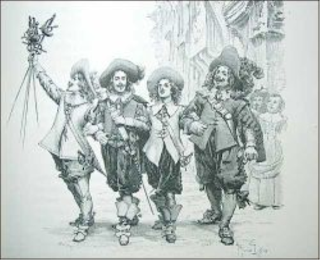Based on their construction, Telescopes can be divided into two categories, viz. reflecting telescopes and refracting telescopes. The Refracting telescope uses lenses while the reflecting telescope uses mirrors. Refracting telescopes are generally for making viewing objects on earth while reflecting telescopes are used for astronomical observations.
Principle of Operation:
A Telescope is constructed using an objective that gathers light from a faraway source and an eye-piece that forms an image that the eye can see. The objective is a lens in case of a refracting telescope or a mirror in case of a reflecting telescope.

The objective gathers the light from the object to be viewed and focuses it on a point. The second lens the eye-piece collects the light from the focal point of the objective and enlarges it. The magnifying power and the resolution of the telescope are dependent on the choice of the lenses
Famous Telescopes:
Telescopes come in a wide range of sizes and shapes. Small ones can be bought from the toy
 store for a few dollars while large telescopes weigh many tons and cost millions of dollars. Large telescopes such as the Hubble space telescope.
store for a few dollars while large telescopes weigh many tons and cost millions of dollars. Large telescopes such as the Hubble space telescope.Besides optical telescopes, most modern astronomical observatories have telescopes which collect all types of electromagnetic radiation such as radio waves, ultraviolet light and create images. The Hubble telescope has an aperture size of 2.4 metres. Other notable telescopes include the 5 meter Hale telescope at the Palomar Observatory.
Important terms related to the telescope:
Resolving power of a telescope: The resolving power of a telescope is the ability of the telescope to differentiate between two different points of the image. Telescopes with higher resolving power produce higher quality images.
Magnifying power of the telescope:
This is the ability of the telescope to magnify the image. The magnifying power is the ratio of the focal lengths of the objective lens and the eye-piece. Therefore by varying the eye-piece lens any magnification could be achieved. However, magnification alone does not produce good quality images. Excessive magnification can result in blurred images.
Aperture: An aperture is a small opening that allows the entry of light. In telescopes, the term “aperture” generally refers to the size of the objective lens which collects the light from the distant object.
Tips for Buying a telescope:
Telescopes are popular amongst amateurs interested in astronomy. A good refracting telescope is ideal for making for looking at the sky. While choosing a good telescope, it is important that you look at the size of the aperture or the objective lens along with the magnification. Many people believe that magnification is all that is necessary to obtain a good image. It is also necessary for a telescope to have a good resolution to deliver.
Besides looking at the optics, it is also necessary to look at the mountings of the telescope along with the portability if you plan to make observations from different places. Read More


 When Santa has finished with dispensing his goodies to the world’s children, where does he go back to? Where does he live? Well, according to the people of Finland, Santa lives in the northern part of their country, known as Lapland. He lives in a place called Korvatunturi.
When Santa has finished with dispensing his goodies to the world’s children, where does he go back to? Where does he live? Well, according to the people of Finland, Santa lives in the northern part of their country, known as Lapland. He lives in a place called Korvatunturi.  The Dugong is an aquatic mammal that lives in the sea, usually in shallow areas such as channels, bays, etc.
The Dugong is an aquatic mammal that lives in the sea, usually in shallow areas such as channels, bays, etc. 

 "The Three Musketeers" is a novel by the noted French Playwright and novelist, Alexander Dumas. Set in the backdrop of the French political scene before the French revolution, the novel details the adventures of a young man,
"The Three Musketeers" is a novel by the noted French Playwright and novelist, Alexander Dumas. Set in the backdrop of the French political scene before the French revolution, the novel details the adventures of a young man, 